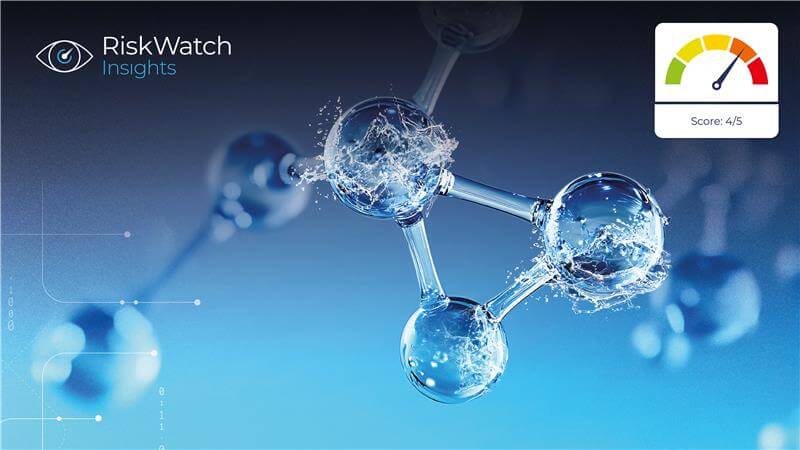The looming threat of a restriction on the use of Per-and polyfluoroalkyl substances (PFAS) – or so-called ‘forever chemicals’ – is a source of contention across industry with uncertainty over the effects on products, processes and balance sheets.
Although often overlooked, this is also a growing source of concern for the industrial gas and equipment industry.
In the view of the latest GWGI RiskWatch report published earlier this week, the subject of PFAS regulation and a scenario where an outright ban (with exemptions) exists would carry a considerable risk to the industrial gas and equipment industry.
The report focuses on medical oxygen delivery, wider compressed gas equipment, and the use of PFAS in electrolysers and fuel cells as particular pain points.
What’s going on with PFAS?
PFAS is a family of more than 10,000 chemicals that can be found in a wide range of products, in the environment and in our bodies.
PFAS are man-made substances created by replacing hydrogen atoms (the natural bonding partner for carbon) with fluorine atoms. This gives PFAS the water and oil repellent properties that are sought after in so many industrial production processes.
PFAS variants also exist, such as certain lubricating pastes that are essentially mixtures of finely powdered PTFE (Poly Tetra Fluoro Ethylene) and liquid PFPE (Per Fluoro Poly Ether) oil. Both of these components are considered PFAS variants.
Thousands of PFAS have been identified, and hundreds are produced industrially. As an example, according to the European Environmental Bureau (EEB), as many as 100,000 sites in Europe are estimated to emit PFAS into the environment.

Air, oxygen, nitrous oxide – medical gases. concept.
PFAS are used in thousands of products and applications, from non-stick cookwear to lipstick and from seals and gaskets through to oxygen-compatible lubricants in valves and regulators, but their very nature means they also come at a cost.
The fluorinated parts of emitted PFAS are not degradable – meaning that once released into the environment, these PFAS cannot be broken down into carbon dioxide or methane by bacteria, enzymes, or sunlight, hence the tag ‘forever chemicals’.
This concerning and harmful legacy of these products that has resulted in a growing pushback on PFAS and variants, with calls gathering for greater regulation and even phase-downs of PFAS and their variants.
Read more: PFAS clean-up will cost $2trn over 20 years
Some of the mounting questions and pushback on PFAS reached a tipping point in March 2023, when five EU member states (Germany, Sweden, Denmark, the Netherlands and Norway) submitted a REACH dossier to the European Union (EU), via the European Chemicals Agency (ECHA), proposing a broad restriction/ban on the manufacture, import and use of the over 9,000 PFAS products already in widespread use or on the market.
March 2025 then saw a group of scientists come together to call on the EU to address the threat of chemical pollutants in Europe’s freshwater ecosystems.
The issue is not contained to Europe, with various levels and authorities of PFAS clampdown in the US in recent years and a growing sense of regulation in the Asia-Pacific region, for example.

GWGI RiskWatch findings
The GWGI RiskWatch report published earlier this week explored the many nuances of PFAS usage across the industrial gases business and the risk factors in the event of restrictions or outright bans.
It considered the ramifications from an upstream air gases production point of view, the potential for medical oxygen delivery disturbances if valves and regulators were affected, and the impact upon the clean energy transition if electrolysers and green hydrogen technologies were to be disrupted.
It also touches upon the potential for end-of-life PFAS restrictions and the related implications across the supply chain.
Case studies are explored throughout the report, including the use of PFAS in the semiconductor sector and the many ways in which this could be affected.
Read more: PFAS phase-out is challenge but also an opportunity
On the whole, GWGI RiskWatch understands there is a feeling that the gases industry could be the subject of ‘collateral damage’ as a result of more scrutinised PFAS regulation and its own nuanced, smaller seat at the table of policy and regulation considerations.
In fact, the report’s conclusion noted, “The danger of collateral damage surrounding this highly politicised topic underlines just how significantly this is beyond the industry’s control and leads this report to determine a Q2 2025 risk score of 4/5. Impact at a major level seems to be of a high likelihood.”
It also noted how perception and negative press, coupled with the tightening net of regulation and legal consequence globally, is already driving the closure of some PFAS production facilities and effectively taking the matter out of industry’s hands.
“Ultimately, PFAS is an issue which won’t go away – and is becoming increasingly pressing for governments, industrial gas suppliers and customers,” the report adds. “As with the decarbonisation debate, the solution lies in reframing the challenges into opportunities, providing the right policy and investment climate to court innovation and create sustainable and viable market solutions.”
For the full RiskWatch report, visithttps://www.gasworld.com/white-paper/riskwatch-pfas-industrial-gases/2161034.article/. Subscribers to gasworld can download the report as part of their subscription, while non-subscribers can secure access to the report and all four RiskWatch reports in a calendar year for just £350.
 What is GWGI RiskWatch?
What is GWGI RiskWatch?
GWGI RiskWatch is a quarterly insights & analysis monitor for industrial gas supply chains. From the threats facing by-product gases and sourcing, to external economic and policy headwinds, and geopolitical risk factors, RiskWatch provides subscribers with deep insights and assessment of supply chain concerns.
The Q1 2025 GWGI RiskWatch report assessed the complexion of the helium industry in 2025, the potential for Helium Shortage 5.0, and where the fault lines may lie for the years ahead.
For more information, visit https://www.gasworld.com/riskwatch/
